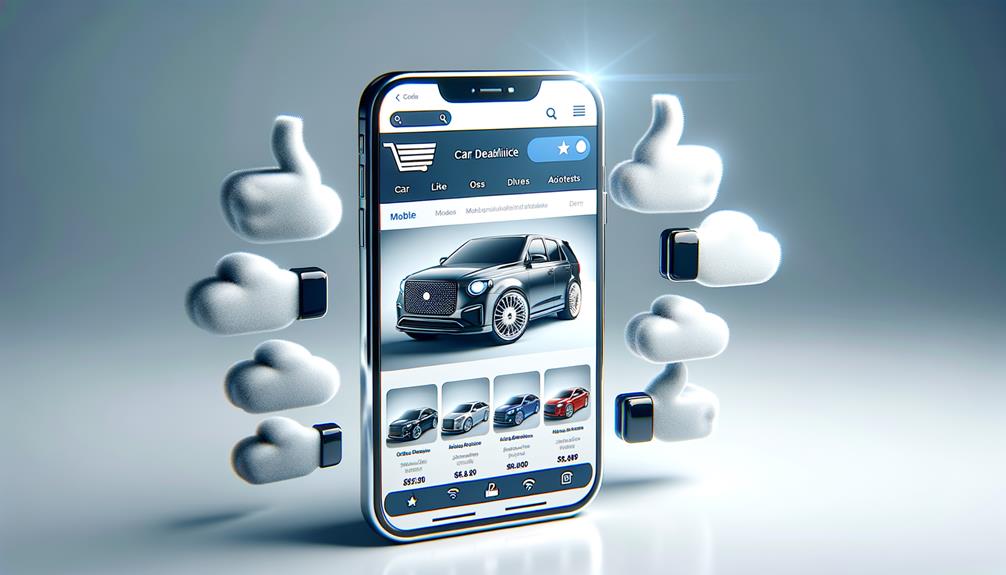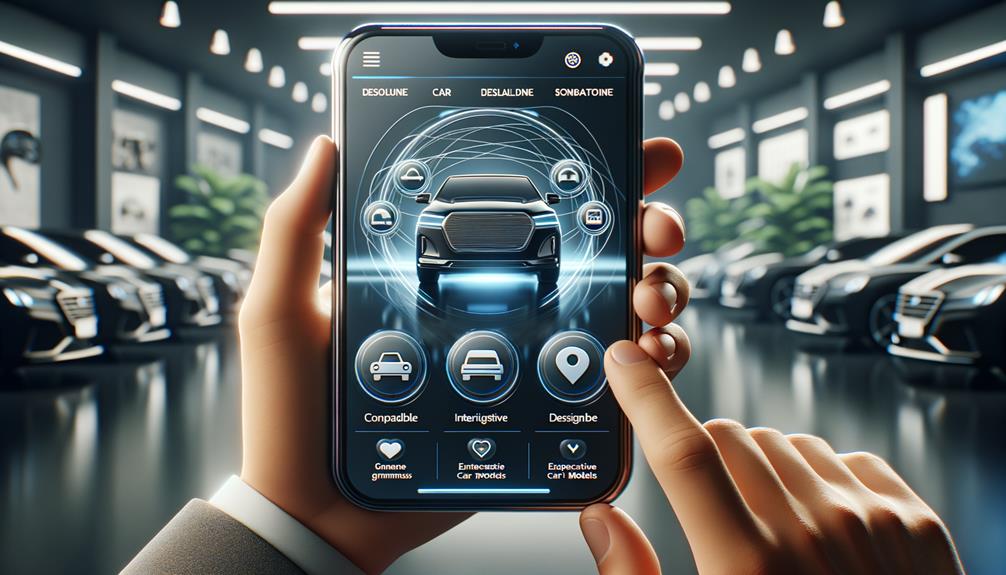Just like a well-oiled machine powers a car, a thoughtfully created mobile-first strategy propels car retail websites into the future of online shopping. In our brisk and tech-heavy sector, mobile devices are taking the lead over desktops as the go-to tool for online shopping. It's not enough these days to just have a site that works well on mobile; it's about making mobile the main focus of our digital design. We need to give priority to the experience of mobile users, tweak our site performance for smaller screens, and simplify navigation for touch interfaces. But, the question is, how do we shift to a mobile-first strategy without slipping on desktop? And how can this strategy lead to more active customers and higher conversions? There's a lot to discuss, so let's kick this conversation off.
Understanding Mobile-First Strategy
Understanding the mobile-first strategy in modern times is key to tapping into the potential of tech-savvy buyers. In a nutshell, it involves designing an automotive retail website with mobile devices as a priority before adjusting it for desktop devices. It's not just about creating a mobile-friendly site, but rather building a responsive website that keeps the mobile user experience at the forefront.
At the heart of a mobile-first strategy is the aim to provide an optimal mobile user experience. This means ensuring quick load times and excellent mobile performance, which are critical for online car shoppers who use their smartphones to browse dealership websites.
The shift toward a mobile-first design isn't merely an option—it's a necessity, given the rising trend of mobile internet usage. By adopting this strategy, automotive retail sites can draw in and engage more mobile shoppers, resulting in increased sales and a competitive advantage.
The standout feature of successful automotive retail sites is proactive planning and designing for the mobile experience. It includes optimizing aspects such as navigation, image and video content, and checkout processes, all designed with a mobile-first strategy in mind. We're not just creating websites—we're crafting experiences that are optimized for mobile.
Pros and Cons of Mobile-First Design

It's undeniable – the world of automotive retail is changing. Nowadays, a lot of shopping happens on mobile devices, and this has led to the rise of mobile-first design. This strategy offers many advantages, such as appealing more to mobile shoppers, enhancing user experience, and notably boosting website speed and performance. However, it's not all rainbows and butterflies; there are certain hurdles to overcome.
For instance, there can be an increase in development costs, and the need for meticulous optimization testing across different mobile devices. Plus, it might necessitate additional desktop optimization.
We've put together a simple table to help visualize the pros and cons of mobile-first design for sites in the automotive retail sector:
| Pros | Cons |
|---|---|
| Quicker load times | Increased development costs |
| Boosts user experience | Requires intensive testing |
| Draws in more mobile shoppers | May need extra desktop optimization |
The bottom line is, mobile-first design can significantly improve the shopping experience for mobile users. Given the smaller screen size of mobile devices compared to desktops, a responsive design for mobile-first websites is key to thriving in the online world. But it's essential to keep in mind the increased development and maintenance costs, as well as the potential need for extra desktop optimization. These challenges must be thought through to fully enjoy the advantages of mobile-first design in the automotive retail space.
Best Practices for Mobile-First Design

Let's have a chat about some top-notch strategies for adopting a mobile-first design approach. This tactic is quickly becoming a game-changer in the world of automotive retail. As more folks turn to the internet to shop for auto parts, having a strong mobile presence isn't just a 'good to have' anymore – it's critical. Here's our advice on how to go about it:
- Put essential content first: Consider what your mobile users need most. This could be anything from product details, pricing, or store locations.
- Adapt to all screens: Your website design should be flexible, providing a smooth experience across different devices.
- Enhance mobile browsing: Websites should load fast, be user-friendly, and offer a pleasant browsing experience.
- Draw in mobile shoppers: Considering that 54% of online purchases are now made via mobile devices, it's important to ensure your site is optimized to attract and keep these customers.
Identifying Mobile-First Auto Consumers

Once you've nailed down a mobile-first design for your car retail website, the next critical move is to understand your primary audience – the mobile-first car shoppers. These individuals are turning more and more to their mobile gadgets to surf car retail websites, searching for vehicles, components, and add-ons. They demand quick page loads, smooth browsing, and a user interface that fits their screen size like a glove.
Given that these consumers are responsible for most of the online traffic, ensuring a first-rate mobile experience is non-negotiable. So, what's the best way to pinpoint these mobile-first car shoppers? It all boils down to understanding their online habits and preferences.
| Consumer Behaviour | Strategy |
|---|---|
| Using mobile devices for shopping | Tune the site for mobile use |
| Favouring fast-loading websites | Boost site speed |
| Engaging with mobile-friendly user interfaces | Concentrate on mobile design that's easy to use |
| Purchasing components online | Ensure easy access to components and add-ons |
Key Elements of a Mobile-Friendly Site

When it comes to enhancing the mobile experience, a few key features come to mind. These are, a user-friendly navigation menu, quick-loading images and videos, a smooth checkout process, a design that adapts to various screen sizes, and search options that work well on mobile.
- User-friendly Navigation: A simple yet effective navigation menu can guide shoppers across the website, making it easier for them to find what they need.
- Quick-loading Content: Images and videos should be optimized to load quickly on mobiles. Slow load times can lead to user annoyance and may negatively impact your online marketing efforts.
- Smooth Checkout: A simplified checkout process can significantly increase conversions. Our experience at Porch Group Media shows how a smooth checkout can convert even the casual browsers into buyers.
- Adaptive Design: Your site should be able to adjust to different screen sizes. Offering a uniform experience across devices can enhance user engagement.
In addition to these, having a mobile-friendly search feature is important. Well-structured landing pages can help users find what they're after and guide them towards making a purchase. So, when designing for mobile, remember that every detail matters.
Now, let's turn this into a chat. Imagine you're out and about with your smartphone in hand. You want to buy something online, but the website is slow to load and hard to navigate. Frustrating, right? That's why it's so important to have a mobile-friendly site. It should be easy to use, quick to load, and simple to make a purchase. Plus, the site should look good, no matter the size of your screen. And don't forget about search – users should be able to find what they need without any hassle. All these elements play a part in making a site truly mobile-friendly.
Frequently Asked Questions
What Is the Mobile First Design Strategy?
We're all about adopting a mobile-first design approach. What does that mean? Well, we kick-start the design process by first tailoring websites to fit perfectly on mobile screens before expanding them to accommodate larger displays. Our goal? To provide a speedy, easy-to-use browsing experience on mobile devices to cater to our audience's on-the-go lifestyle.
Is Mobile First Still Relevant?
Without a doubt, the mobile-first approach continues to be relevant today. It's transforming our online interactions, allowing for quicker load times, and putting the spotlight on important content. Its influence can be seen across the board, not just within the auto retail sector.
What Are the Differences Between Desktop First and Mobile First Design Strategies?
When we talk about the key contrasts between desktop-first and mobile-first strategies, it's like comparing apples to oranges. You see, a desktop-first approach is all about designing for the larger screens first, then gradually scaling it down. Think of it as starting with the big picture, then zooming in. On the other hand, mobile-first takes the opposite route. It begins with a focus on smaller screens, aiming for quick and efficient mobile viewing, and then scales up for desktop interfaces. Like two sides of a coin, each has its own advantages.
What Is the Mobile First Trend?
We are witnessing a shift towards prioritizing mobile-friendly designs on websites. The focus is on making the mobile user's experience smoother, boosting the speed of the site, and delivering visually pleasing interfaces. This shift is indeed transforming the landscape of the digital world.

